|
 Dwight Peck's personal website Dwight Peck's personal website
Tuscany in the off-season
Arezzo and the neighborhood in February and early March, 2015
You may not find this terribly rewarding unless you're included here, so this is a good time for casual and random browsers to turn back before they get too caught up in the sweep and majesty of the proceedings and can't let go.
Arezzo was at the top of our list when we based ourselves in Lucca a few months ago, but we never made it this far south. So here we are now, based in Arezzo this time, with lots to see roundabout.
But first, the road trip southward: Pavia, and its Certosa (I)

From home near Lake Geneva, we're on the snowy roadway up to the tunnel under the Grand St-Bernard Pass, 25 February 2015.

Through the GSB tunnel and down the other side, through St-Rhèmy, St-Oyen, and Étroubles . . .

. . . into the Valley of Aosta, the Val d'Aosta, and thence past Ivrea out onto the Lombard plain.
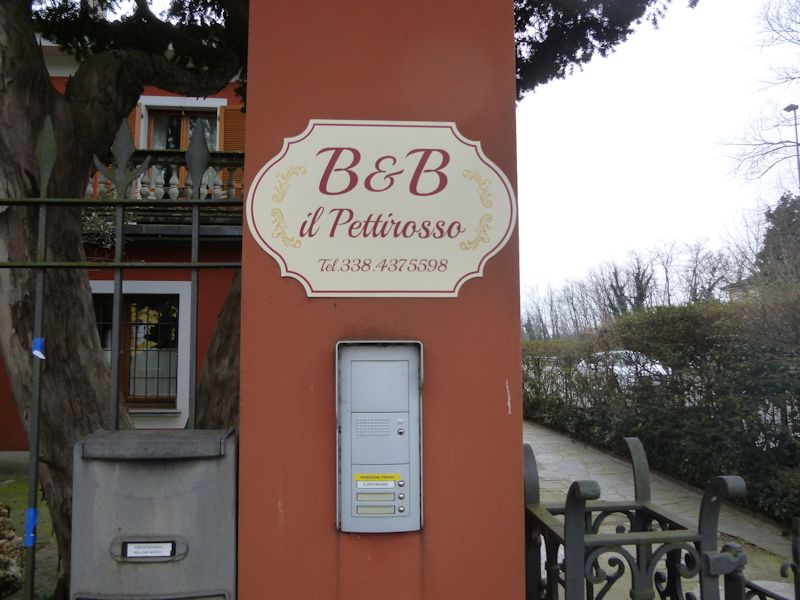
To the B&B Il Pettirosso, a wonderful, small, family-run establishment, right on the main street of the tiny village of Certosa di Pavia -- but, in fact, easily missed.

"Il Pettirosso", which apparently refers to the robins that show up every spring.

Our room was upstairs, with windows in both directions

Really nice people, good wifi in the rooms, but no credit cards

Working through the latest Guardian quiz

The Squirrel checking out the little library in the adjoining room
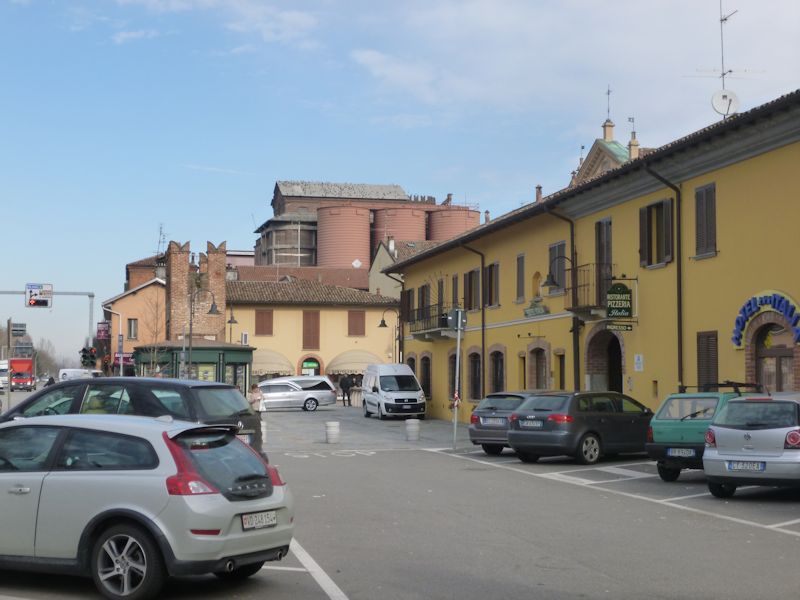
The Hotel Italia next door, and a sporty little Volvo with Swiss license plates parked conveniently nearby

We dined here both nights -- the first night, they screwed up the orders thoroughly and tried at first to brave it through ("no, no, that's not beef, it's just red pork"). Kristin clarified matters for them sharply, and the next night we were treated as VIPs.
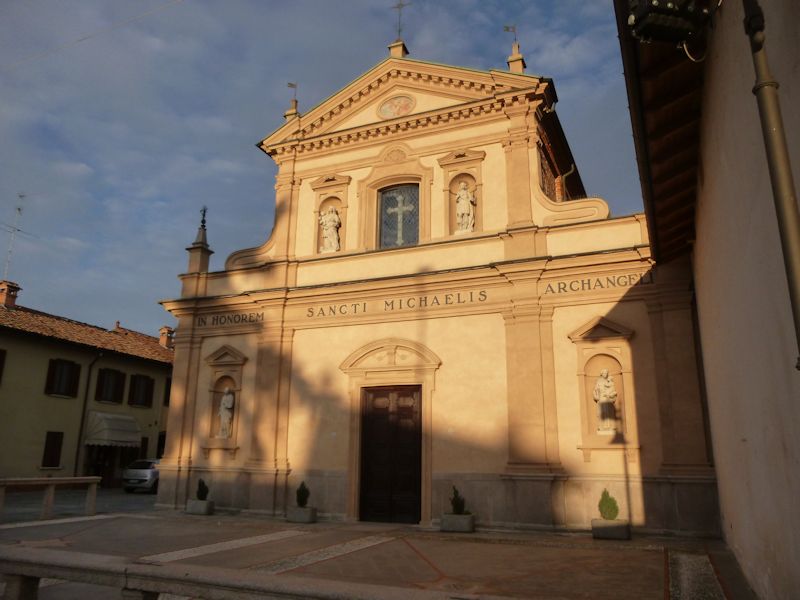
The local church. Certosa di Pavia is a small village that grew up to serve the huge Carthusian monastery that was plunked down here by the Visconti of Milano in the 15th century, just 8km north of Pavia itself.
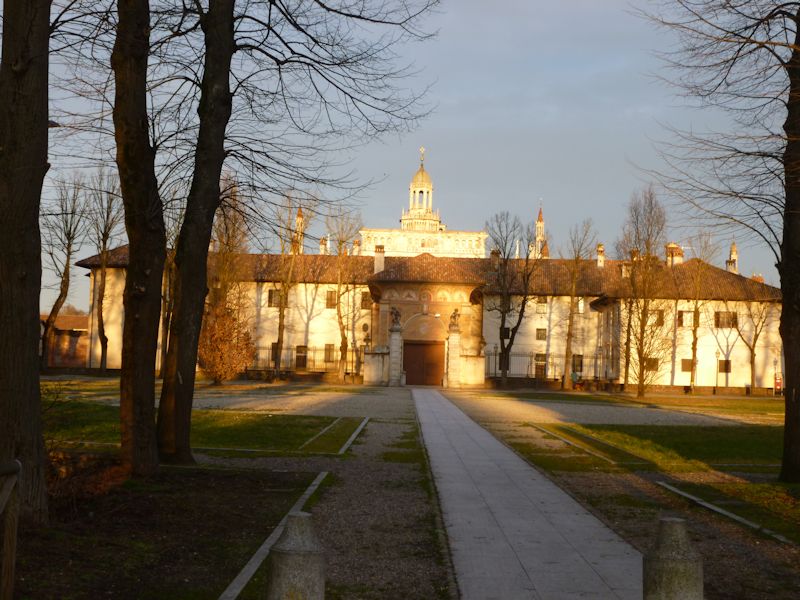
Here's the Certosa itself, just a kilometre's stroll out of the village, in late afternoon sunlight.

A fairly big deal, it seems, but it's closed for the day. The Certosa was built on the edge of the Visconti' huge hunting estate that extended all the way out from Pavia.
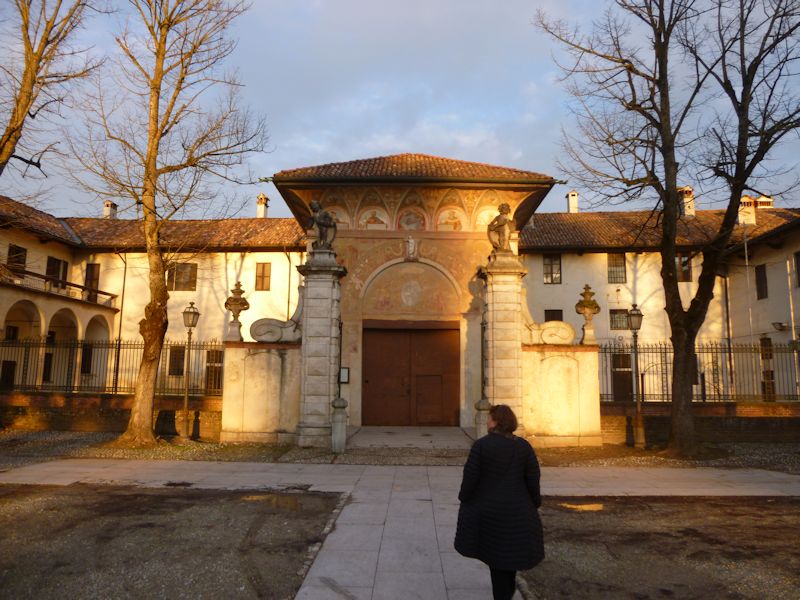
The monks have it locked up tight, but we'll persist. We're going to 'do' Pavia tomorrow, but then we'll be back to find out what's really what in there.

Bright and not too early the next morning, a good breakfast in Il Pettirossa and off we go to Pavia, just 8km down the road.
Pavia
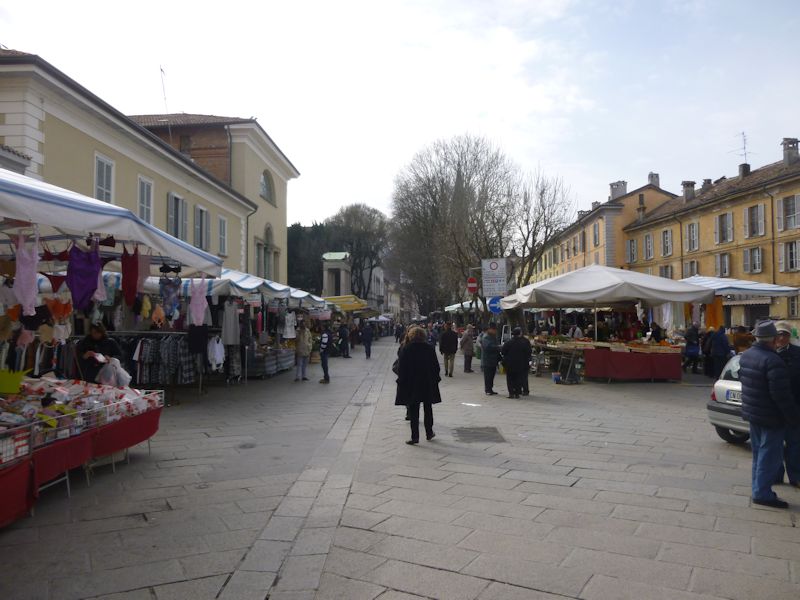
A street market on XX Settembre street (every Italian city has a 20th of September street, commemorating the completion of the Italian unification of 1861 with the defeat of the Pope and his French garrison in Rome in 1870).

Pavia is a venerable town of ca.70,000 souls on the Lombard plain, nestled beside the lower Ticino river out of Lago Maggiore, where it joins the mighty Po, and 35km due south of Milan. These days it's well known for its agricultural products, like rice, wine, cheeses, and cereal crops, in common with the other towns of the fertile Po floodplain, and for its many educational institutions, particularly the University of Pavia dating from 1361, or depending on your definitions, from AD 825.

From pre-Roman Ligurian beginnings, Pavia, under the name of Ticinum, was a Roman military base famous for having narrowly avoided being destroyed by Hannibal when his Carthaginian invaders stormed through the region in 218 BC. Throughout the Roman imperial period, it served as a municipality and garrison along the Via Aemilia military road.
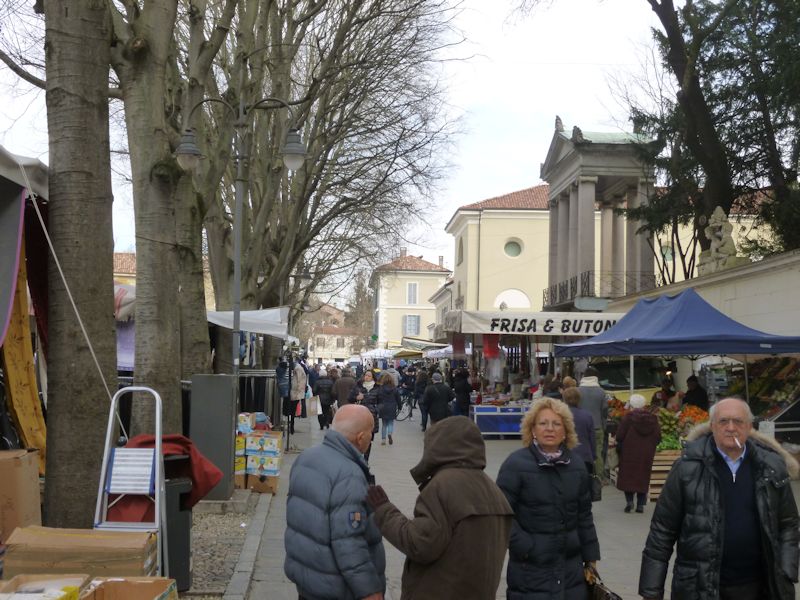
Nominally "the last western Roman Emperor", young Romulus Augustus, a stand-in for his ambitious father the general Orestes, was captured here (and Orestes executed nearby) by Odoacer, the "first King of Italy", in AD 476, with a general devastation of the town. When soon afterward Theodoric the Great established his Ostrogothic kingdom throughout northern Italy, formalized in 493, he poured resources into rebuilding Pavia with a collection of public buildings, baths, an amphitheatre, palaces, and what not.

A church; let's go see. Unfortunately King Theodoric, who really was Great, was much less great towards the paranoid end of his reign, in the 520s, and amongst more than a few ill-advised decisions, he exiled his top administrator, the philosopher Boethius, to seclusion in a church in Pavia in 523 and had him executed here in 524. We'll look in on Boethius a little later today.

The Chiesa di Santa Maria del Carmine, at the back door, just off XX Settembre street
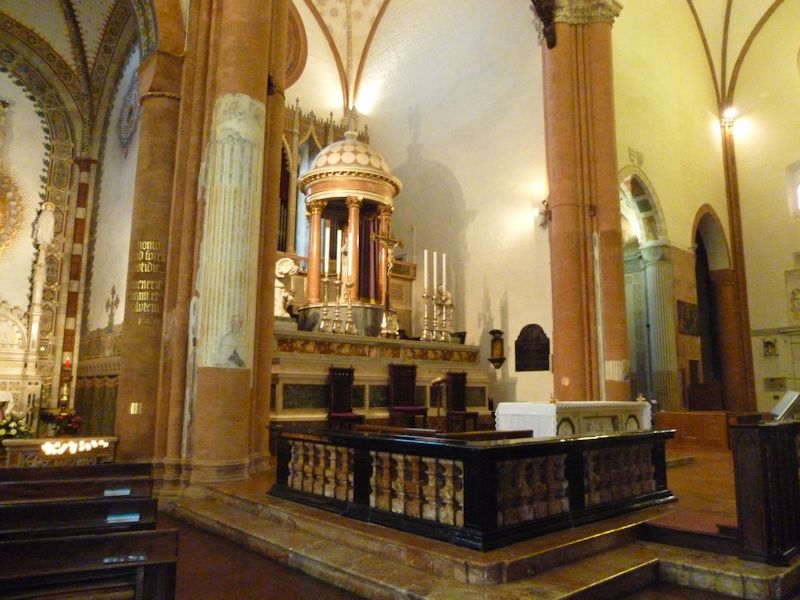
The church, considered to be a good example of Lombard Gothic, was begun in 1374 by Gian Galeazzo Visconti but not hurried through to completion. It was finally finished up in 1461.
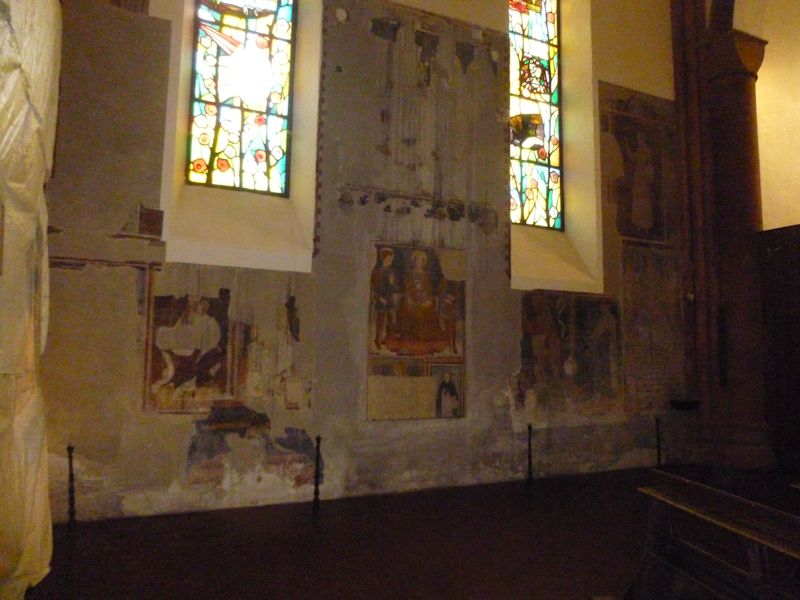
15th century frescoes abound around the transept.

Brickwork columns; in fact, brickwork everything
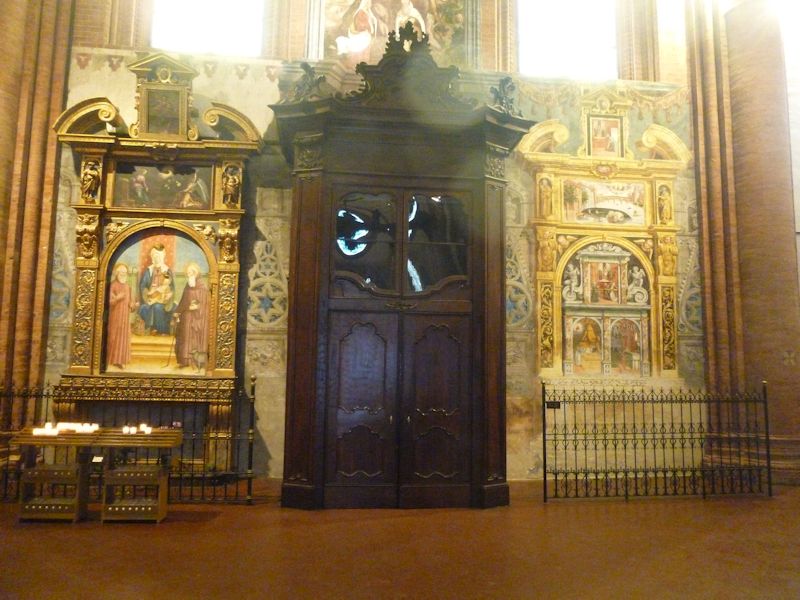
The front door . . .

. . . and the impressive façade (with a little help from restorers in the 1850s)

We wander on. Not long after Theodoric's death, the Eastern Roman Emperor Justinian sent his famous general Belisarius to reclaim the region for Byzantine hegemony, and Pavia was amongst the few towns capable of holding out for the old Ostrogoth ways for the next two decades after Belisarius's victory everywhere else in 540. But then, alas . . .

. . . the Lombards, or Longobards, swarmed over the eastern Alps in AD 568 and changed everything. Pavia held out through a 3-year siege whilst the Lombards mopped up most of the rest of Italy. In 572 the city surrendered, and by 620 Pavia had become the de facto capital of the Lombard kingdom of Italy and residence of its kings -- including its most famous king, Liutprand (d.744) (whom we'll also meet later today), who was a relic-hunting sort of king and responsible for rescuing the remains of St Augustine of Hippo and installing them here in Pavia. (We'll also look in on St Augustine a little later today.)

This is the Piazza Duomo, raising our expectations . . .
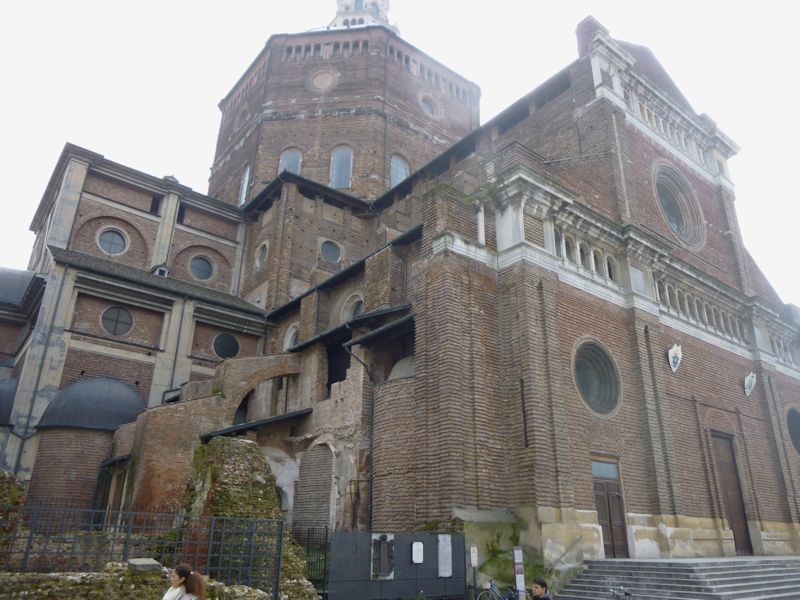
So that must be the Duomo, the Cathedral of Pavia. Closed up tight ('Spiritual crisis? Take an aspirin and come back at 3 p.m.') The duomo was begun in 1488 and allegedly had some input from Bramante and Leonardo da Vinci, and the work carried on resolutely, and carried on, and on, bits and pieces from time to time; the dome was completed in 1885 but fell in straightaway. The transept was completed in 1930.

Well, it's closed up tight, but that's probably okay. The completion of the transept required a lot of concrete. But we're sorry to miss the thorn from the original Crown of Thorns, which resides within.
There was also a notable 70-meter civic tower here, to the left of the front of the Duomo, but alas, it fell down in 1989, squashing four people and prompting serious commitments about the future of the Leaning Tower of Pisa.

Oh my. Who are those guys in the hoodies?

Round the side of the Duomo; that's all we'll get to see of it today.
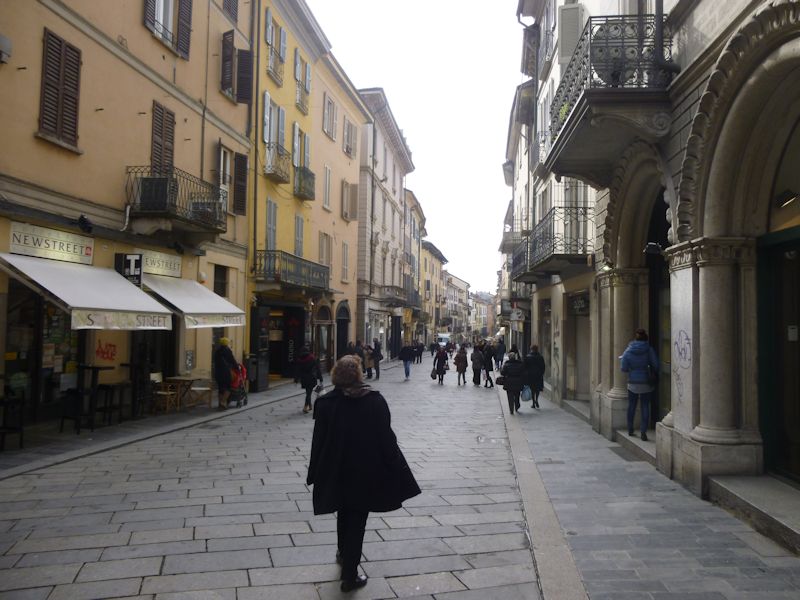
The high street of the centro storico, the Corso Strada Nuova -- we're looking for the Basilica di San Michele Maggiore, which promises much.

An original Lombard chapel was here until 1004, but this fine piece of work in the 'Lombard-Romanesque style' arose on the spot from the late 1000s to its completion in 1155.

The central aisle of the nave, looking to the altar
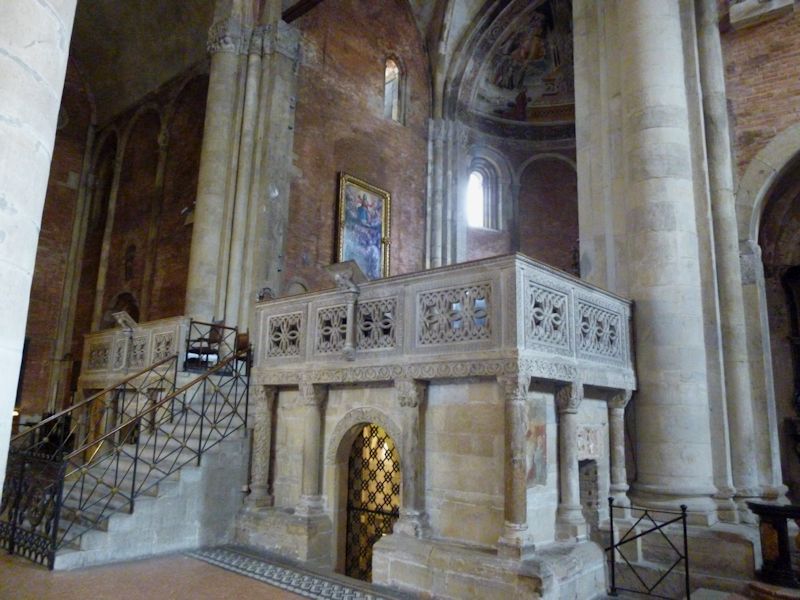
The high altar, raised presbytery, and entrance to the crypt below it

A row of side chapels along the left aisle

This is looking across the nave at the left aisle, with restoration works or something all enshrouded.
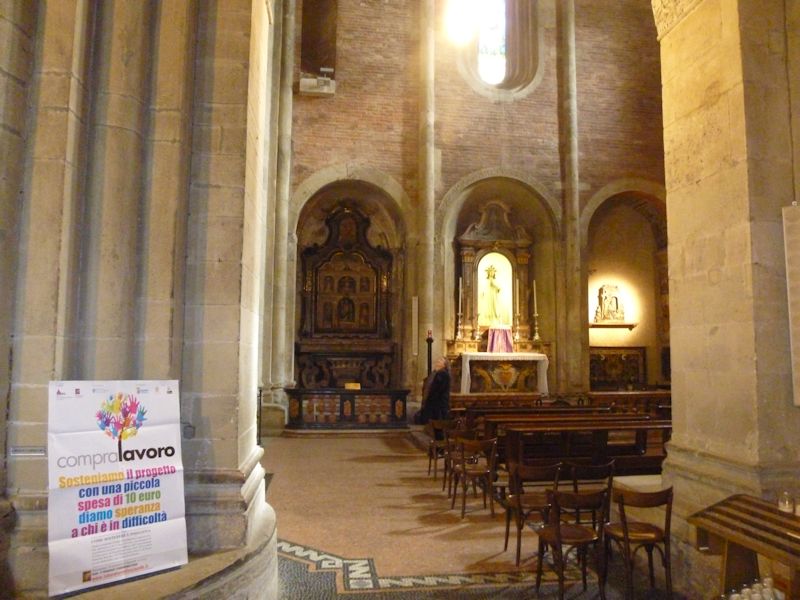
There are a couple of minor saints (old local bishops) supposedly in residence here; perhaps that's they, across the way.

The high altar and presbytery or chancel

Along the side of the presbytery

The bright and cheery crypt

We could spend our day with the capitals on the columns.


Two horses, or somethings, joined at the butt . . .
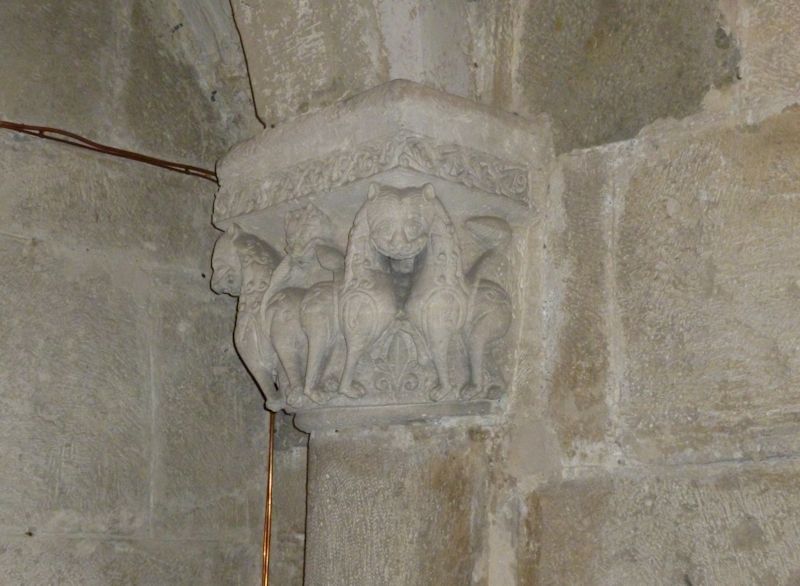
. . . and at the head.


-- We're being watched. Don't look up. DON'T look up!

A poignant story. But who's that in the box?

Decorated vaults

Friedrich Barbarossa, the first of the Hohenstaufen Holy Roman Emperors, was crowned King of Italy in this church in 1155, as Louis III the Blind had been, in the precursor church here, in 900, with the 'Iron Crown of Lombardy'.
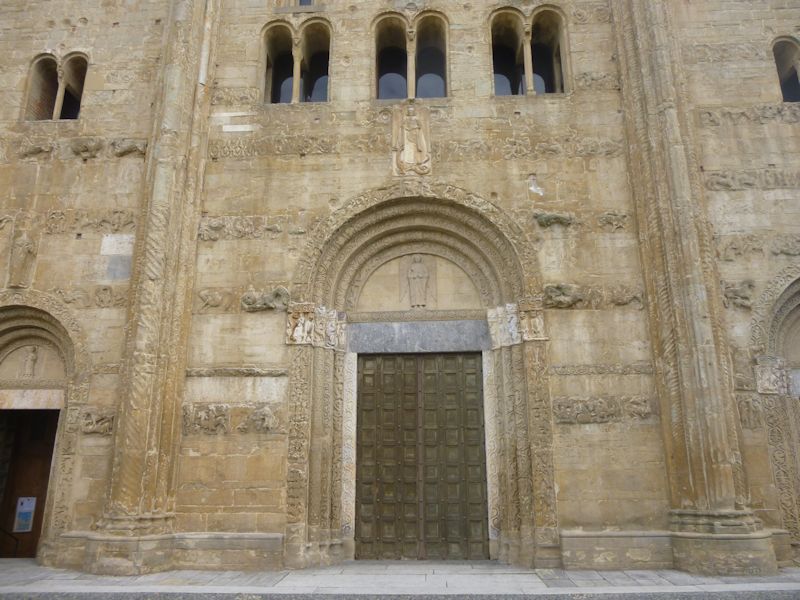
The main door in the façade, with some pretty amazing sandstone sculptures all over it

The lunettes have angels in them which are described in chiseled text as ambassadors from the parishioners to heavenly listeners somewhere above.

The right-hand door of the façade

Much-weathered sandstone animals having a disagreement

Too much of this could leave you with nightmares.
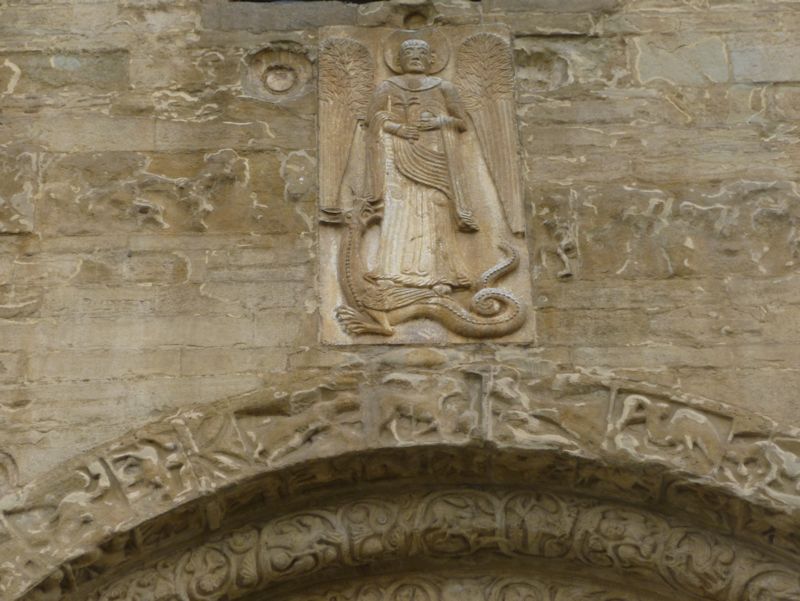
A boy and his dragon
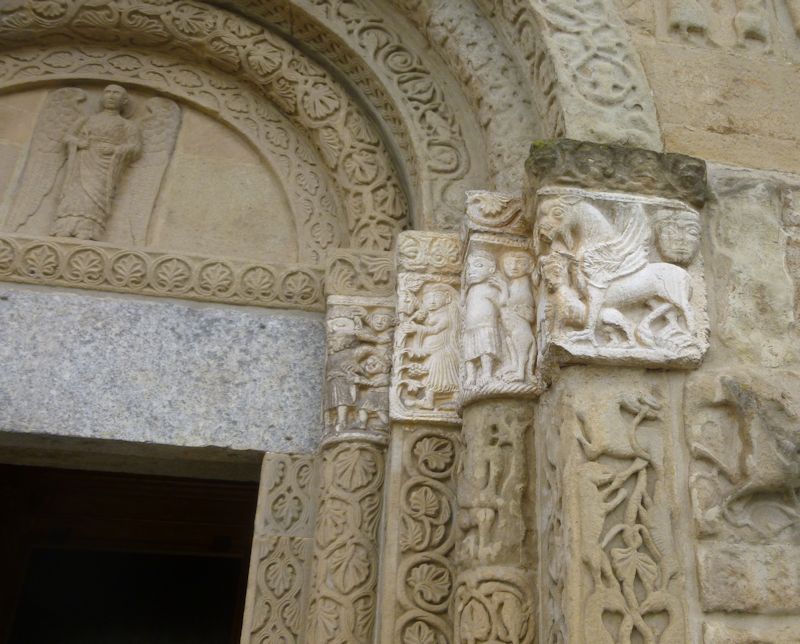
A griffin eating somebody

The Basilica di San Michele Maggiore
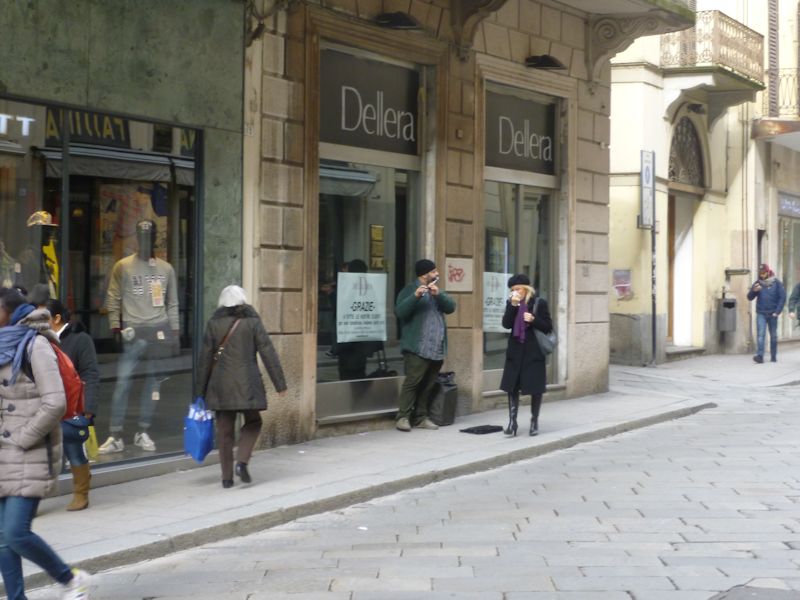
A busker blowing on his flute. A passerby blowing on her nose.
        
      

 Feedback
and suggestions are welcome if positive, resented if negative, Feedback
and suggestions are welcome if positive, resented if negative,  .
All rights reserved, all wrongs avenged. Posted 26 March 2015. .
All rights reserved, all wrongs avenged. Posted 26 March 2015.
|
 Dwight Peck's personal website
Dwight Peck's personal website












































































